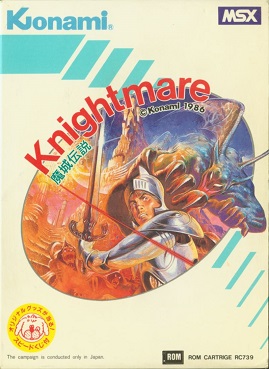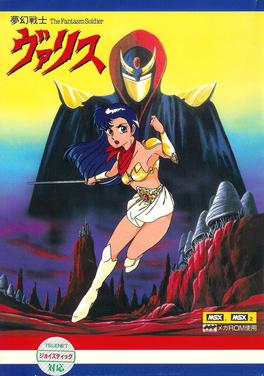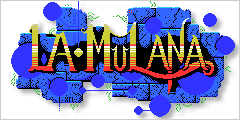
Castlevania, known in Japan as Akumajō Dracula, is a gothic horror action-adventure video game series and media franchise about Dracula, created and developed by Konami. It has been released on various platforms, from early systems to modern consoles, as well as handheld devices such as mobile phones. The franchise has expanded into several spin-off video games and other media, including comic books and an animated television series.
Michiru Yamane is a Japanese video game composer and pianist. Yamane's musical style draws on baroque, classical and rock traditions, with both Johann Sebastian Bach and Yellow Magic Orchestra as prominent influences. She is best known for her two decades of work at the gaming company Konami, with her compositions for the Castlevania series among her most recognized work.

Castlevania II: Simon's Quest is a 1987 action role-playing game developed and published by Konami. It was originally released in Japan in 1987 for the Famicom Disk System, and in North America in 1988 for the Nintendo Entertainment System. It is the second Castlevania game released for the NES, following the original Castlevania (1986). Set seven years after the events of the first installment, the player once again assumes the role of vampire hunter Simon Belmont, who is on a journey to undo a curse placed on him by Dracula at the end of their previous encounter. Dracula's body was split into five parts, which Simon must find and bring to the ruins of Castle Dracula in order to defeat him. The game deviates from the traditional platforming of its predecessor, incorporating role-playing and open world elements.

Castlevania III: Dracula's Curse is a 1989 platform game developed and published by Konami for the Nintendo Entertainment System. It was released in Japan in 1989, and in North America in 1990, and in Europe by Palcom in 1992. It was later released on the Virtual Console for the Wii, Nintendo 3DS, and Wii U.

Castlevania: Legacy of Darkness is a 1999 action-adventure game developed and published by Konami for the Nintendo 64. A prequel and expanded version of Castlevania, also released on the Nintendo 64 earlier the same year, it contains a remake of the original game with improved graphics, added villains, and alternate versions of some levels.

Castlevania: The Adventure is a 1989 platform game developed and released by Konami for the Game Boy. It is the first Castlevania title for the system. Castlevania: The Adventure was re-released in color as part of the Konami GB Collection compilations in Japan and Europe. A remake titled Castlevania: The Adventure ReBirth was released as a WiiWare game for the Wii. The original game is included in the Castlevania Anniversary Collection, which was released in 2019.

Super Castlevania IV is a 1991 platform game developed and published by Konami for the Super Nintendo Entertainment System. It has been re-released multiple times, including for the Super NES Classic Edition.

Castlevania II: Belmont's Revenge is a 1991 platform game developed and published by Konami for the Game Boy. It is the second Castlevania title for the Game Boy and serves as a sequel to the previous title, Castlevania: The Adventure. Belmont's Revenge is included in color in the fourth volume of the Konami GB Collection compilations. Set fifteen years after the events of Castlevania: The Adventure, Dracula returns and kidnaps Christopher Belmont's son Soleil at his coming of age feast, and turns him into a demon. With Soleil's mystical powers, Dracula retakes human form and rebuilds his castle, forcing Christopher to confront Dracula once again to save his son and Transylvania.

Haunted Castle is a 1987 platform game developed and released by Konami for arcades. It is the second arcade game in the Castlevania franchise, following Vs. Castlevania, an arcade port of the original 1986 NES video game released in North America. Unlike the previous arcade title in the franchise, Haunted Castle is not a direct port of an existing console game, but a newly-developed arcade game running on custom JAMMA-based board.

Knightmare is a 1986 vertically scrolling shooter video game developed and published by Konami for the MSX home computer. It was included in compilations for the MSX, PlayStation and Sega Saturn, followed by a port for mobile phones, and digital re-releases for the Virtual Console and Microsoft Windows. It is the first entry in the Knightmare trilogy. The game stars Popolon, a warrior who embarks on a quest to rescue the princess Aphrodite from the evil priest Hudnos. The player must fight waves of enemies while avoiding collision with their projectiles and obstacles along the way, and facing against bosses.

Parodius: The Octopus Saves the Earth, also known as Parodius, is a scrolling shooter video game developed by Konami for the MSX computer and was released in Japan. The game is notable for being the first title in the Parodius series, although it is often confused with its sequel Parodius! From Myth to Laughter. The name itself is a portmanteau of "Gradius" and "Parody" and, eponymously, the game is a parody of the Gradius series of space-based horizontally scrolling shooters. Many of the characters and enemies are derived from that famous shooter series, while other elements are extracted from other Konami titles, such as Antarctic Adventure and TwinBee. This game is of particular note in the series as being heavily infused with Japanese culture and folklore.

Valis: The Fantasm Soldier is a 1986 action-platform video game originally developed by Wolf Team and published by Telenet Japan for the MSX, PC-8801, X1, FM-7, and PC-9801 home computers. It is the first entry in the Valis series. It stars Yuko Asou, a Japanese teenage schoolgirl chosen as the Valis warrior and wielder of the mystical Valis sword to protect the Earth, the land of spirits, and the dream world Vecanti from demon lord Rogles. Throughout the journey, the player explores and search for items and power-ups, while fighting enemies and defeating bosses to increase Yuko's attributes.

Shalom: Knightmare III is a 1987 adventure video game developed and published by Konami for the MSX home computer. It was re-released digitally for Microsoft Windows. It is the third and final entry in the Knightmare trilogy. Set a century after the events of The Maze of Galious, the plot follows a Japanese high school student teleported into the Grecian Kingdom who must prevent the resurrection of the ancient demon lord Gog. Gameplay revolves around interaction with characters and exploration, while taking part in battles against enemies and bosses. The game was created by the MSX division at Konami under the management of Shigeru Fukutake. The process of making original titles for the platform revolved around the person who came up with the characters. Development proceeded with a team of four or five members, lasting somewhere between four and six months. It received a mixed reception from contemporary critics and retrospective commentarists.
Momotarō Densetsu, also known by the abbreviated name Momoden, is a role-playing video game series in Japan featuring the character Momotarō from Japanese folklore, as well as other Japanese folklore characters such as Kintarō, Urashima Tarō, and Princess Kaguya. The first game in franchise, Momotarō Densetsu, had shipped 1 million copies in Japan.

La-Mulana is a platform-adventure video game, designed to imitate the look and feel of MSX games. Released on June 27, 2006, in Japan for Microsoft Windows, the game was only available in Japanese, but an English translation patch has been produced by Ian Kelley of AGTP. The game was later remade from the ground up in a 16-bit style for the Wii, and later PC, Mac, Linux and PlayStation Vita.

King Kong 2: Yomigaeru Densetsu is a 1986 MSX2 role-playing video game by Konami. It was released only in Japan and based on the movie of the same year, King Kong Lives. Similar to Konami's later Hi no Tori games, two separate games were developed together and released for the MSX and Famicom respectively. While the Famicom King Kong 2: Ikari no Megaton Punch has players playing as King Kong in a more action-oriented format similar to Nintendo's The Legend of Zelda, Yomigaeru Densetsu has players playing as Mitchell in a role-playing style.

Finalizer - Super Transformation is a vertically scrolling shooter released in arcades by Konami in 1985. The player controls a jet flying through several different states in America shooting different enemies.

Koumajou Densetsu: Scarlet Symphony is an action-adventure Touhou Project fangame developed in 2009 for Microsoft Windows. The game has also been referred to as Touhouvania. A remaster, titled Koumajou Remilia: Scarlet Symphony, was announced in 2021, and released on July 28, 2022 for Steam and Nintendo Switch.

















